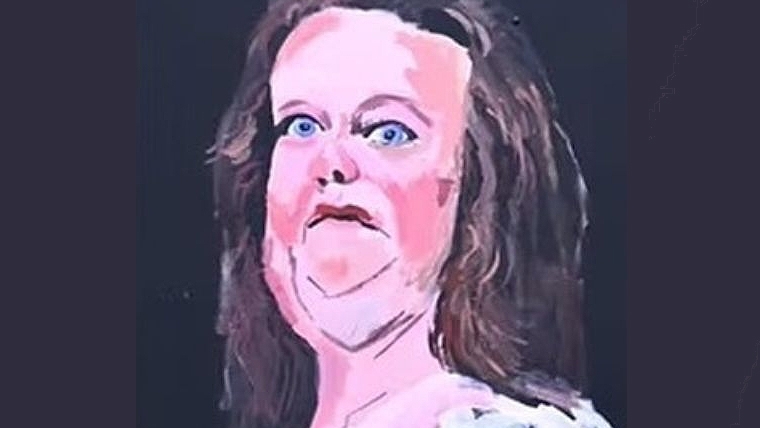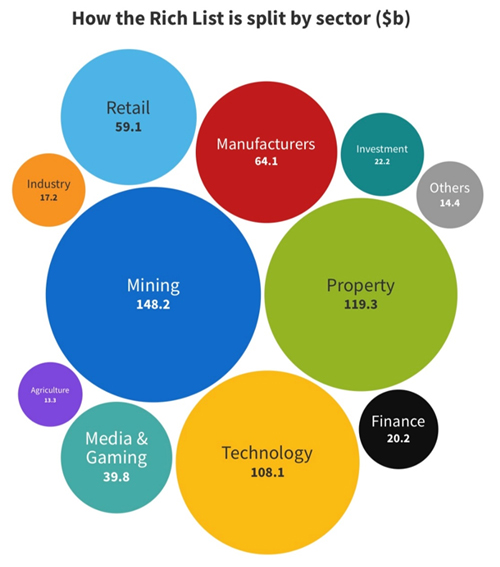
One issue dominates the political discourse in Australia right now – the cost-of-living ‘crisis’.
The Labor government insists it’s working tirelessly to relieve the financial pressure on all Australians. That was the rationale for last month’s ‘something for everyone’ Budget. It included a tax cut for every taxpayer, power bill relief for every household and small business, cheaper medicines, student debt relief etc etc.
A cynic might say this largesse had a lot to do with the next election, expected within the year.
In his Budget speech, the Treasurer, Jim Chalmers, went out of his way to express empathy with all Australians. ‘We know people are still under the pump’ he reassured the voters.
Some more than others he might have added. Two weeks after the Treasurer’s comforting words, The Australian Financial Review released its ‘Rich List 2024’, identifying the country’s 200 wealthiest citizens. Their total wealth is now estimated at A$625 billion, up a healthy 11% on last year.
According to the AFR, Australia now has 150 billionaires, and it takes a fortune of $1.6 billion to make it into the top 100. This is similar to the rich list produced by The Australian newspaper in March. That list named 159 billionaires and a top 100 entry level of $1.5 billion.
Calculating the wealth of individuals, particularly those primarily invested in private companies, has obvious difficulties. Nevertheless, rich lists provide useful information on which parts of the economy are thriving and which are not.
This year saw the mining sector retain its status as the largest single source of wealth for Australia’s richest citizens. Five of the top ten on the AFR’s rich list make their money from extracting the country’s mineral wealth.
First among them is Gina Rinehart, Australia’s iron ore queen. She tops the list for the fifth year in a row. Her wealth is estimated at just over $40 billion. That doesn’t include the wealth of her four children who all make the list separately with around $2.7 billion each.
Last year, number two on the AFR list was Andrew ‘Twiggy’ Forrest, a self-made mining magnate worth $33 billion. This year he tumbles to number eight with ‘just’ $17 billion. Bad investments? No, just an enormous divorce settlement.
How do Australia’s billionaires compare with their international counterparts? According to the World’s Billionaires List 2024 from Forbes, there are just 15 Australians (and one kiwi) among the world’s 1,000 wealthiest people.
Gina Rinehart has a sizeable fortune but it’s interesting to see where she ranks globally. Australia’s richest person sits at number 56 on the Forbes list with US$30 billion. That’s a long way behind the likes of Bernard Arnault with US$233 billion and Elon Musk with US$195 billion. (New Zealand’s Graeme Hart comes in at 213th with US$10 billion.)
The Bloomberg Billionaires Index has Ms Rinehart in 83rd position with a somewhat smaller fortune. The differences reflect different valuation methodologies.
Unsurprisingly, the relative significance of different sources of wealth on Australia’s rich lists differs markedly to that on the Forbes and Bloomberg lists – more mining and property, less luxury brands and EV manufacturing. This reflects the nature of the Australian economy.

Source: The Australian Financial Review
It seems inevitable that the tech sector will soon overtake property as the second greatest source of wealth for Australia’s superrich.
Agriculture was the basis of many fortunes in the early days of Australia’s settlement by Europeans and it remains a major contributor to the country’s exports. However, it does not produce many billionaires.
Interestingly, Australia’s largest private landholder, and one of its largest farmers, is none other than Gina Rinehart. She owns 9.2 million hectares, equivalent to about 1.2% of the country. You’ve got to do something with all those mining dividends.
Australia’s two rich lists are a reminder of the speed at which fortunes are now made in the technology sector. Historically, many of the richest Australians built their wealth over decades in manufacturing, newspapers, and property. Harry Triguboff and Frank Lowy are classic examples – property developers and landlords for more than sixty years.
Compare their trajectory with 31-year-old Ed Craven who has amassed a $4 billion fortune in cryptocurrency and online gambling. His company was founded in 2017. Or Melanie Perkins and Cliff Olbrecht, now worth more than $10 billion, who set up their software company, Canva, in 2013.
Australia’s most successful tech entrepreneurs are Scott Farquhar and Mike Cannon-Brookes. Still only 44, they are each worth more than $20 billion thanks to their Nasdaq-listed but Australian headquartered software company, Atlassian.
Of course, there are still plenty of Australian billionaires making money through more traditional, and slower, routes. That often involves doing business on both sides of the Tasman. Many fortunes are based on Australian household names that are equally familiar in New Zealand – Harvey Norman in retail, Kennards in equipment hire, Linfox in trucking, Reece in plumbing products, and Goodman in property.
Three fast-moving rich listers with a recent kiwi connection are brothers Jack and Sam Gance and Mario Verrocchi. Thanks to the success of Chemist Warehouse, this trio have rapidly ascended the ranks of the very wealthy. The AFR rich list records the Gances up 65% this year to nearly $4 billion and Verrocchi up 43% to more than $3 billion.
With the pharmacy colossus expected to go public later this year through a reverse takeover, it wouldn’t be surprising to see this trio outperform most of their fellow billionaires again in 2025. Their main competition for fastest movers will almost certainly come from the tech sector.
However, no one’s likely to threaten Gina Rinehart for top spot as the richest Australian. So long as the Chinese continue to buy Australia’s iron ore, her crown looks secure for the foreseeable future.
*Ross Stitt is a freelance writer with a PhD in political science. He is a New Zealander based in Sydney. His articles are part of our 'Understanding Australia' series.
3 Comments
I presume that those employed by Australian "mining giants" are actually paid much better than their counterparts in other places in the world. No need for this sort of jealousy; wealth isn't a win-lose proposition. There can be greater inequality but still overall rising living standards and conversely, greater equality but dropping living standards. Consider which option is actually more appealing.
Lol where's the jealousy?
Our current model is ultimately a zero sum game. We fail to see this due to our fixation on $$ wealth.
Believing that equality will erode our standard of living is simply a fear based narrative to justify the status quo. The standard of living is already being affected by growing inequality.
Ha it used to be that millionaire was the desired status and now that is worth nothing. It just highlights the failing value of our money. When it requires more tokens for the same item that's not an increase in value or worth of the item but a decrease in the value of the tokens.
This article is a reminder of the sad values of capitalism and economics (as we know it), and therefore of society.
The inflation you decry is not a product of capitalism, but of state interference in the money supply.

We welcome your comments below. If you are not already registered, please register to comment
Remember we welcome robust, respectful and insightful debate. We don't welcome abusive or defamatory comments and will de-register those repeatedly making such comments. Our current comment policy is here.